This article is part of a larger exploration of Christian Innovation and Design. This article concerns the ministry application of Design Thinking Tools.
In Church, we are always fighting against constraints. There is little money, little permission, little buy-in, and little time to do something creative. And yet, our Creator summons us to create. How can we create like our Creator, when there are so many obstacles? Additionally, once we begin the process of creation, we discover that much of what we can create within our constraints tends toward the saccharine, or the silly, or the half-done. How can we create something meaningful, something that actually honors God and leads God’s people into a deeper experience of faith? And, finally, even if we’re able to create something meaningful within our constraints, over time those experiences will suffer from a lack of substance—they tend to feel the same, hitting the same notes on the figurative keyboard, and people become dismissive of our efforts. So, how can we create something of substance that will explore new avenues of faith and new material for our people to consider long after our offering has subsided?
One helpful process to resolve these issues is known as ‘design thinking.’
What is design thinking? Design thinking is a method of innovation that allows you to prototype solutions to specific problems in hopes of getting out of your ruts and growing past your current limitations. In this article, we will present a ministry-specific design methodology, which may differ from the typical approach favored by thought leaders like the Harvard Business School, IDEO, and the Stanford D-school.
What are design thinking tools? Design-thinking refers to the philosophy of iterative problem solving. Design thinking tools are the specific methods and processes which can be repeatably employed to generate new and innovative approaches to ministry problems. Design thinking tools are important because they get us out of our ruts, help us attack problems with fresh insight, and ultimately materialize practical, innovative solutions in our churches.
Why are design thinking tools important? The primary value of design thinking is that it offers a repeatable method for developing new, innovative solutions. By using this simple, iterative process, we better understand peoples’ “sacred self-interest”, challenge our assumptions about ministry, redefine common problems, and prototype new solutions that can be quickly tested, experimented, and then implemented in the local church.
At Fossores Innovation and Design, we use a design thinking matrix that involves 5 phases, which we’ve incorporated into the acronym D.R.E.A.M.
Again, this article is not simply a rehashing of the design thinking tools by Ideo. Here, we’re concerned with the application of those design thinking tools to ministry-specific purposes. What follows is an overview of those tools and how to apply them, though you can download our design thinking tools pdf here in order to keep a reference at hand.
Fossores Innovation and Design employs a design-thinking process that involves 5 phases, which we’ve incorporated into the acronym D.R.E.A.M.
* Delve into an NPO (need, problem, or opportunity) within either your church or your community. This can be something practical—like “How do we increase our Sunday visitor flow?” or “What can we do to help the homeless get adequate shelter?” —or something metaphysical—like “How can we help form healthy disciples?” or “How can we experience the presence of God more fully in worship?” The point of “delving” is to identify as specific an NPO as possible and to frame it as a question, such that we can supply an answer at the end of the design-thinking process.
* Restrict the scope of our experimentation to fit our material, social, and schematic constraints. Material constraints include time, space, and money. Social constraints concern those issues that will be “costly” for your community (such as certain theological ideas that chafe, or perhaps the amount of favors you’ll need to call in, or the amount of energy you’ll need to expend persuading people to change). Schematic constrains include deciding whether this is a one-time event or an event to be repeated; whether this will be on/offsite; whether this will be primarily for the church (insiders) or the community (outsiders).
* Explore the related SIMs (stories-images-metaphors) in both scripture and culture. Here we want to avoid looking simply for Bible verses that support our efforts, but instead look for the SIMs that will allow us deeper, more holistic spiritual insights. Likewise, we don’t just want to find cultural fads and copy them, but to find specific cultural trends, memes, and symbols that reveal the spirit of the times. Finding 10 SIMs each from scripture and culture will give us a broad pallet of ideas which we can then compare and contrast to identify overlap; those overlaps will be the raw materials with which we compose our proposed solutions.
* Attempt several prototypes; meaning, mock up—with as much detail as possible—a rough draft of what a solution could be. For example, if you’re trying to answer the question “How can we encourage more bodily, kinesthetic, worship in our liturgy?” then you’d want to do things like: draft a few written liturgies that rely on the SIMs above; create models of the worship space (using cardboard or Lego, etc) to see what the opportunities/obstacles might be; host beta-test events where small groups of people participate in a variety of proposed activities and observe their behavior and ask for their feedback, etc. The point it, you want to actually DO and TEST your solution in a rough-and-ready environment before trying it out for real in your church. We recommend going through four versions of each prototype. Version 1 is a quick-and-dirty attempt just to see where the obvious wins/misses are. Version 2 makes significant changes, incorporating what you’ve learned from Version 1. Version 3 and 4 are largely improvements on Version 2, since that’s where the biggest “aha” moments tend to arise. We recommend limiting the iteration process to Version 4 in order to set healthy expectations among team members and protect against discouragement and perfectionism.
* Materialize the proposed solution in your space with your people and try it out! Measure the results and honestly ask whether or not you’ve addressed your stated NPO. Then, return to the “Attempts” until satisfied with your solution.
What are examples of design thinking tools? The best design thinking tools for each stage of Ministerial Design are as follows:
For DELVING consider using:
– CSAT (customer satisfaction survey)
– SWOT (strengths, weaknesses, opportunities, threats)
– Visions, Mirrors, Brick Walls, Speed Bumps
For RESTRAINT consider citing:
– Material, social, and schematic constraints
– Use the Theory of Constraints (TOC) to brainstorm how you might exploit these constrains for even great efficacy, or even leverage these constraints in order to craft a cleaner, more potent experience/production/offering
For EXPLORATION consider using:
– The SIMs of both Scripture and Culture
– For Scripture, consider relying on Lectio Divina
– For Culture, consider relying on Google Zeitgeist or TED
For your ATTEMPTs consider using:
– An iterative process that takes concepts from version 1 through version 4
– A Customer Journey Map
– Prototyping tools like Legos and Post It notes
For MATERIALIZATION consider using
– Low risk, beta-offerings when you can soft launch your experience/production/offering
If I had to pick just one of the tools association with design thinking that was more valuable than all the rest (for the purposes of ministry), it would undoubtedly be: the iteration of versions 1 through 4. When in doubt, make something and see how people like it; then, change!
What are the 4 ways design thinking measures success? At Fossores Innovation and Design, we highlight 4 KPI (Key Performance Indicators) we believe best reveal the value of our process:
* Iteration – the number of viable, innovative approaches to ministry problems we have generated
* Adoration – the number of people who report enthusiasm with the new solution/approach/service (I.e. Customer Satisfaction, or CSAT)
* Emulation – the number of people/organizations who model their approach after ours
* Compensation – the amount of revenue generated, specifically ensuring sufficient income to cover costs, plan for ongoing development, and ensure sustainability for the future
Design thinking prototyping tools are essential in helping participants think quickly through their ideas, bring those ideas to life in conversation, and make fast, easy changes to their original pitch.
When engaged in design thinking, it’s best to have tactile, kinesthetic tools on hand to be able to mock up ideas and show—rather than tell—how things will work. So, even though we’ve included some digital tools in our list below, remember that these are tools designed to get people imagining space and engagement, not just “looking and clicking” at screens. Consider using those digital tools as props in conversation, as easy ways to show ideas upon which you will vamp, and as backdrops for live presentations.
Here are our favorite 10 design thinking tools:
5 Tactile Tools
Sticky notes
Chalkboards (note whiteboards)
Motivation cards – oracle cards, Glimpse cards
Building blocks or Legos
Cardstock that can be folded, bent, or positioned into 3D models
5 Digital Tools
Mindmap software (Mindmanager, Miro)
Graphic Design software (Photoshop, Canva)
Brainwriting software (Discord, Slack)
Storytelling software (Instagram Reels, Lumen5)
Audio Mixing/DJ software (Virtual DJ, GarageBand)
What are prototype tools in design thinking? Prototype tools are simple, easy-to-use, materials that you can quickly employ to create a “thing.” For example, if you’re trying to mock up the design of your auditorium for a new set, you might use Legos or toilet paper rolls and Toblerone bars, or folded pieces of paper and action figures. The point of prototype tools is not that they are accurate representations of what things will actually look like, but that they are fair representations of how things will work, flow, fit, and feel.
Again, design thinking prototyping tools are—truly—anything you can get your hands on that will help you quickly and easily manufacture a visual and material representation of the thing you’re trying to create.
The best design thinking tools, for free, are a whiteboard and sticky notes. Or, if you’d rather go the digital route, then consider Miro.com (a collaborative brainstorming tool) or Google Drawings.
What is one method for designing the end-to-end customer experience? In design thinking, consultants refer to the best tool as a customer journey map; however, in ministry, absolutely nothing is better than an actual, physical, walkthrough. You can do a walkthrough personally, preferably during an event (like Sunday worship, for example), but the best results come if you can get a “secret shopper” to come and pretend to visit your church/event for the day. Have them wear a body camera, or record via the camera on their phone, and just watch—and cringe!—as they experience what it’s like for people to visit.
Again, to optimize this process, it’s best for you to identify what you HOPE the end-to-end customer experience is like, then to list how you think it’s going CURRENTLY, then to be CONFRONTED with the experience of the secret shopper. Share your results liberally, both good and bad, with all teams and people involved. And then use those reactions as an opportunity to role play how things should have gone differently.
These in-person, physical, kinesthetic experiences are essential to the design thinking process, and ensure that design thinking tools are used in safe ways to educate and elevate, rather than to shame or blame those who didn’t meet your expectations.
What are the tools of design thinking? This question ultimately concerns the methods of design thinking, which include: delving into a problem, acknowledging restraints, exploring both scripture and culture, attempting several iterations of a proposed solution, and then materializing that solution into an actual experience, offering, or service.
At Fossores Innovation and Design we refer to this process as a D.R.E.A.M, which parses the ministerial application of design thinking. The specific tools used in design thinking vary according to the challenges and aims of each task, but in general each tool is material (meaning, it involves creating a “thing”), practical (meaning, it isn’t about theory but about what people actually do), and kinesthetic (meaning, it isn’t relegated to “thinking” or “feeling” but focused on actions, behaviors, and patterns).
What are the 5 types of design thinking? Again, for ministry purposes, we recommend the D.R.E.A.M process. You delve into a particular ministry problem, restrain yourself to real-world constraints, explore scriptural and cultural resources, make 1-4 attempts at a prototype, and then materialize your hypothesis into a service, offering, or experience.
Each of the steps in the D.R.E.A.M process will require particular design thinking tools—of which there are myriad—and Fossores Innovation and Design can help you come up with a bespoke, tailored, solution to YOUR particular challenges.
Let’s conclude by returning to our original question: What is design thinking? And, for our purposes here, What is ministry-specific design thinking?
Design thinking is a framework for using lateral imagination to craft innovative solutions to real-world ministry problems that gets us out of our ruts, past easy answers, and into workable, enjoyable, biblical solutions. There are many available design thinking tools for each stage—such as an empathy map, customer satisfaction survey (CSAT) or key performance indicators (KPI)—but the point is that design thinking identifies at least four new ways to measure success: iteration, adoration, emulation, and compensation.
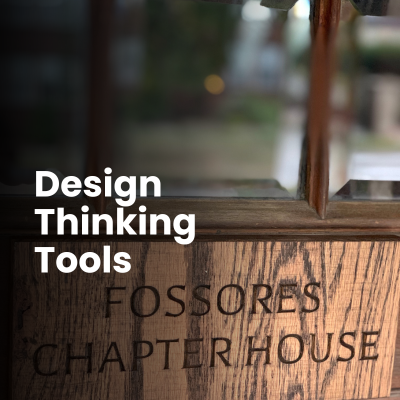
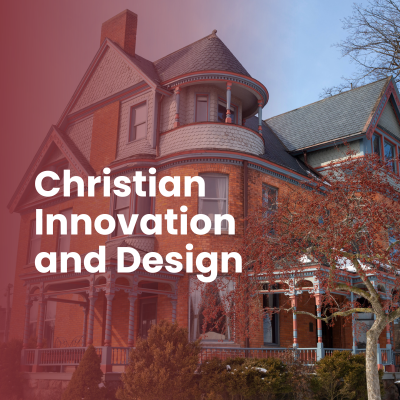
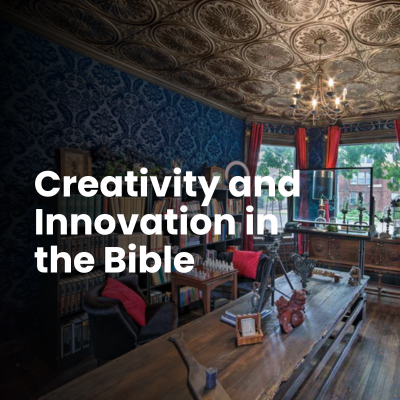
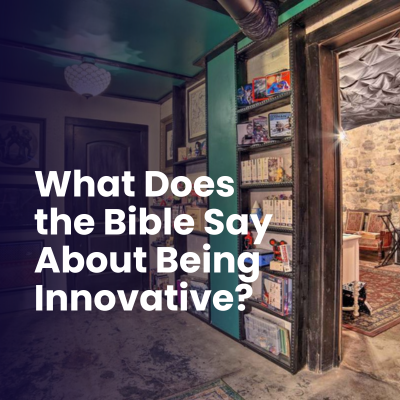


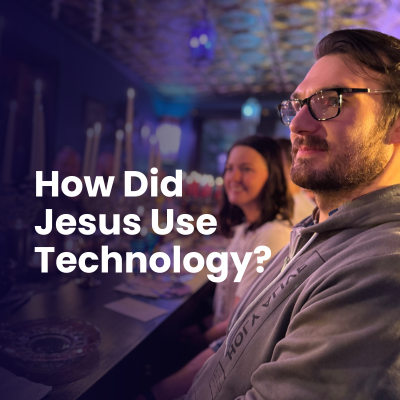




Leave a Reply